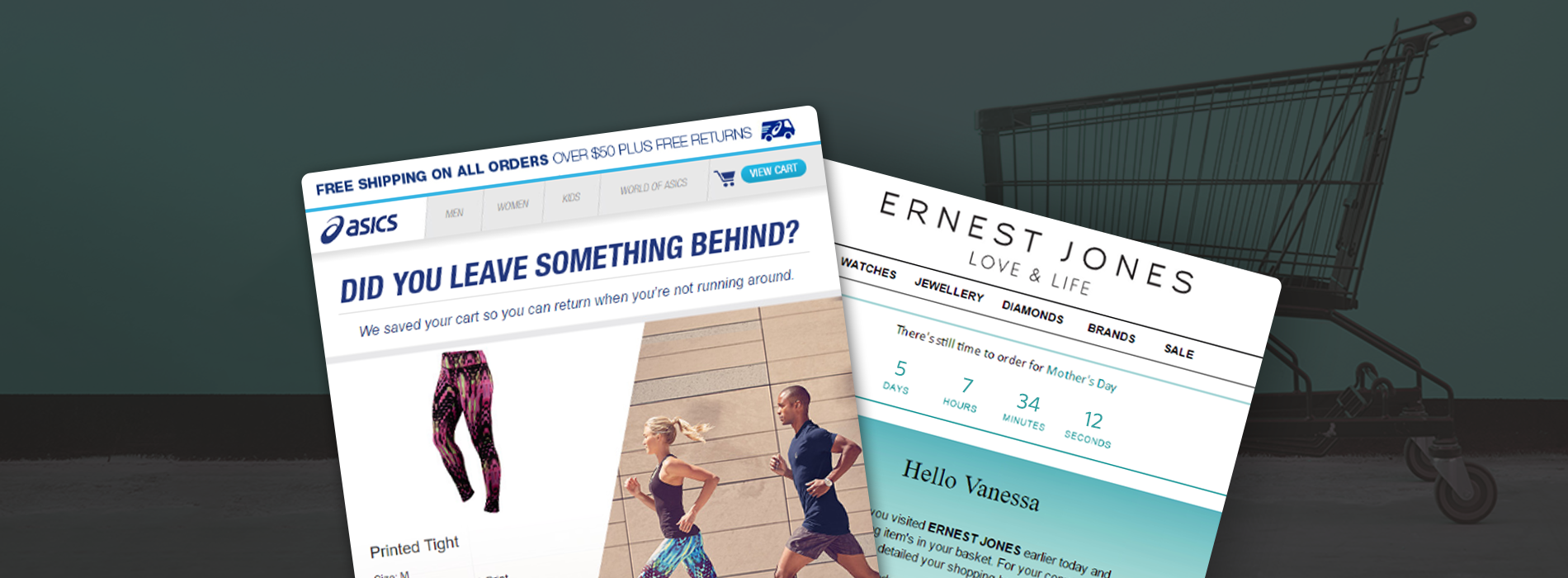Our guide to cart abandonment recovery and how they can help retailers to recover sales that might have been lost.
A lot of money is spent attracting shoppers to websites, but the vast majority of visitors will leave without having made a purchase.
Abandonment rates will vary according to the type of website. For example, travel and finance sites which can have longer forms and purchase processes, will often experience higher rates of abandonment than fashion and retail sites.
In general, around 75% of visitors will leave the contents of their shopping cart and head elsewhere, without completing the purchase.


Why do People Abandon Purchases?
Shoppers will abandon carts for a variety of reasons, and the good news for retailers is that many of these problems can be addressed.
For example, while shoppers conducting research may have no intention of making a purchase on their first visit to a site, there are still ways to keep your site in their minds.
Sites can ensure that the information they need is accessible on site so they don’t need to head for competitors for research. This includes reviews, plenty of images, detailed product descriptions and destination and buyer’s guides for sectors like travel and finance.
They can also ensure that details are saved for return visits, and even offer assistance when customers need it.


Some of the factors cited by customers as reasons for abandonment are simply common ‘mistakes’ made by retailers.
If people are finding out about previously hidden charges after adding items to their carts, then this is a fault of the site. Total costs should be made clear long before customers reach checkout.
Likewise, it’s well-known that making customers create an account is a cause of abandonment, and one which can easily be solved through by implementing guest checkout options and therefore reduce abandoned carts.


Many of the problems here can be addressed by better site design, information and features – and the better sites will have abandonment rates lower than the average – but there will always be a proportion of customers that abandon.
This is where cart abandonment emails can help. They offer a way for sites to reconnect with customers and address some of the issues that caused them to abandon.
What are Cart Abandonment Recovery Emails?
Cart abandonment emails are sent to visitors that have abandoned a shopping cart. They offer a reminder of the items added to the cart and tempt them to return to complete a purchase.
Emails can also be personalised and persuasive features like urgency messages and reviews can also be included.


These emails are typically sent within a short period of time after the customer abandons a purchase.
Indeed, our own experience shows that emails are most effective when sent within a couple of hours, with one hour being the sweet spot.


How do Cart Recovery Emails Work?
First of all, you need the customer’s email address in order to send the email. Not all visitors who abandon will be identifiable though: we are typically able to recognise 15% to 30% of visitors.
For those customers that can be contacted, their email address can be gathered in a number of ways:
- If the shopper is logged in when shopping.
- Visitors may have begun to checkout, have entered an email address (and consented to receive marketing communications) before abandoning.
- You can display a message when a customer is about to abandon, asking for permission to use an email address and offering to save their order details.


As well as sending abandonment emails at the right time (see chart above), the content of the email is a key success factor.
Here are some ways to optimize abandonment emails:
- Segmentation. Emails can be segmented using a range of data (gender, order value etc) to deliver a more targeted message. Our research found that segmentation increases conversion rates by up to 18%.
- Social proof. Reviews and other forms of social proof help to persuade customers to make a purchase, It’s a form of heuristic content which shoppers can use to make decision making easier.


- Urgency. If a travel booking has been abandoned, or products were in a time-limited sale, or a key date is approaching, then adding countdown timers can help to prompt customers to return.


- Dynamic remarketing emails. Visuals and information presented can be changed according to the recipient’s location, design can adapt to the device, while data such as stock levels can be used.
- Send multiple reminders. By delivering a second abandonment email to customers who didn’t purchase from the first one can increase the number of sales recovered.
- Surveys. Giving customers the option to complete a survey can help you to gather valuable feedback to help reduce future abandonment rates.


Stats and Case Studies
- Email marketing, on average, produces email open rates of 21% and click through rates of 3.74%.
-
Remarketing, on average, produces 39% open rates and click through rates of 11%.
- Virgin Atlantic increased online sales by 5% by using remarketing emails, generating an impressive $29 for each email sent.
- Anthropologie’s cart abandonment emails resulted in an impressive 4.1% conversion rate from send, resulting in an impressive increase in online sales of over 7%.


Speak to an expert
Learn how to convert your online audience into revenue with our experts.
Graham Charlton
Graham Charlton is Editor in Chief at SaleCycle. He's been covering ecommerce and digital marketing for more than a decade, having previously written reports and articles for Econsultancy. ClickZ, Search Engine Watch and more.







![Valentine’s Day Ecommerce Tips and Trends [2024 Strategy]](https://www.salecycle.com/wp-content/uploads/2019/01/valentines-ecommerce-1.png)



![How SaleCycle helped Vodafone increase their online sales by an additional 2,000 additional sales per month [Extended Version]](https://www.salecycle.com/wp-content/uploads/2023/08/vodafone-banner.webp)






